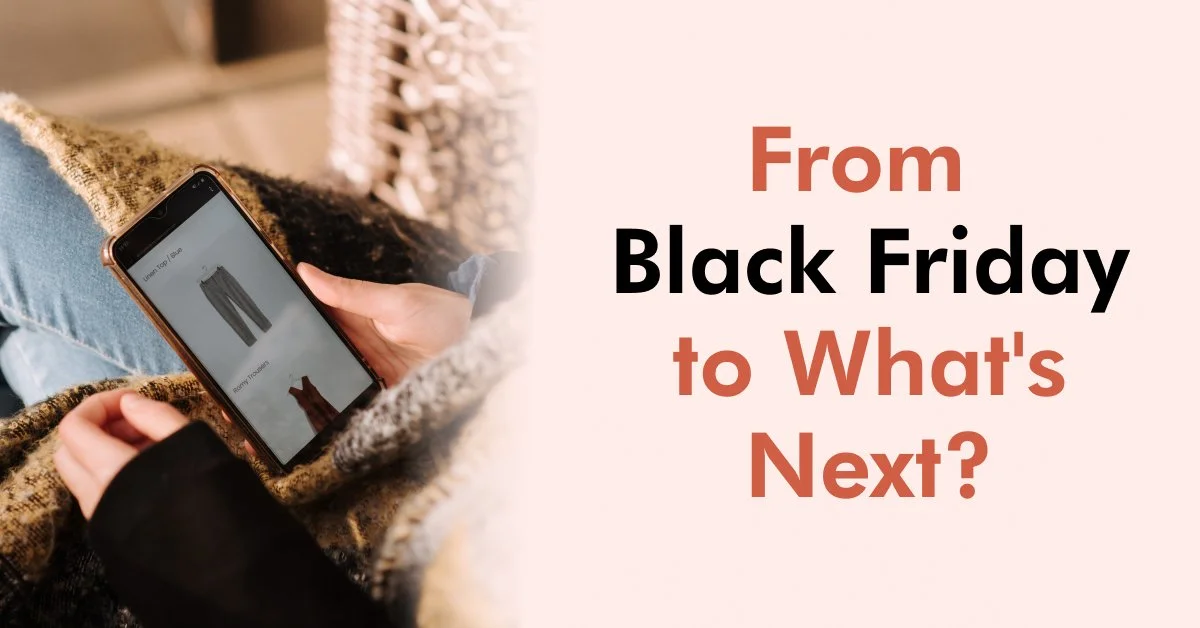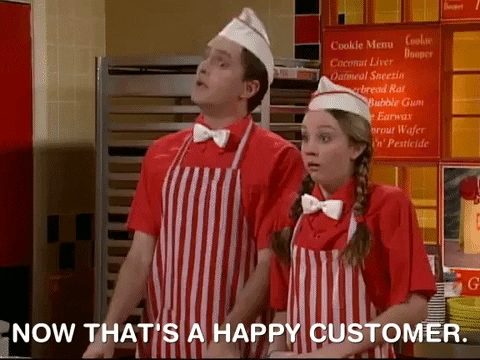Post-BFCM Email Strategies to Maximise Revenue and Retention
Although the dust has settled on BFCM and the busy holiday season, the show isn’t over yet. Black Friday might be “the Super Bowl of shopping periods” (or “the Wimbledon” for our readers on this side of the pond), but it’s still what you do after the curtain has dropped that counts the most for the growth of your e-commerce business.
This is the time to nurture your customers, existing and new. But before diving in, it's important to address a couple of housekeeping items.
If you haven’t already, make sure to clean up or revert your email marketing flows and settings to their pre-BFCM settings and assess your email deliverability performance. Now is also the time for list cleaning or setting up a sunset flow to make sure only engaged subscribers are on the other end of your communications.
That said, with an influx of first-time buyers, subscribers, or even just site visitors, comes a world of opportunity for increased conversions. But with consumers likely fatigued after all the promotional emails that hit their inboxes in November and December, the question is, how do you keep them interested?
From segmentation to personalisation, timing to content, flows to campaigns, get into the nitty-gritty with us over how to utilise your BFCM success to its full advantage.
Email Marketing Post-Sale: Flipping the Funnel
Leading up to BFCM, your focus likely laid on broadening your lists, enhancing brand awareness, and re-engaging past customers. Hopefully, the groundwork paid off. But what now?
This aligns with the classic marketing funnel stages: from awareness and consideration to conversion and, ultimately, loyalty. But with a new segment of customers in the conversion phase, the challenge now lies in steering them towards becoming brand advocates.
This requires a flip in the marketing funnel approach—from acquiring and converting to encouraging loyalty through carefully crafted campaigns.
1. Personalised Follow-Up Campaigns
One of the most impactful ways to optimise your New Year campaigns for post-sale shoppers is through personalised follow-up campaigns. Simple yet powerful, tailor your post-purchase communication to reflect the interests of your new customers. Here's how to do it:
Start by segmenting your email list based on previous purchases (BFCM or otherwise). Group customers by the types of products they bought, the offers they responded to, or even their browsing history.
For each segment, customise emails to resonate with specific interests. For instance, if one segment went for winter wear, follow up with care tips, style guides, or products to complete the look.
Take advantage of behavioural data. If a customer browsed a category but didn’t make a purchase, send them a targeted email showcasing similar products or offering a small, time-limited discount to nudge them towards a purchase.
Don’t always push for another sale; build a narrative around your products. Tell a story that connects their initial purchase to other items or services you offer or simply make sure your Welcome Series communicates your brand message or origin.
Make these customers feel special with exclusive post-holiday deals. This could be a discount on their next purchase, early access to new products, or a special bundle offer.
Encourage customers to leave reviews for products they purchased during BFCM or the holidays. This not only gets your new audience engaged with your brand but also provides social proof for other potential shoppers.
Find out more about the importance of post-purchase flows in our last blog here.
2. Targeted Upselling and Cross-Selling
There are other ways to implement targeted upselling that go beyond simple product recommendations:
Curating exclusive bundles of products that pair well together is always a good way to upsell. Shoppers tend to be more frugal after Christmas, but they’re always looking for a good deal. Push gift bundles at a value that feels like a special deal (this is a great opportunity to push slow-moving stock from Christmas).
When suggesting complementary products, reward your shoppers with special offers. This could be a discount or exclusive sale for those who made a purchase recently.
It’s not just about getting customers to leave reviews. Including existing testimonials in your emails is a great way to influence buying decisions, especially if a customer has expressed interest in an item through their browsing habits.
3. Exclusive Content and Education
Providing exclusive content can remove the transactional element of your New Year campaigns. Strengthen your brand-customer relationships by adding value to the shopping experience.
Try educating new customers on how to get the most out of their recent purchases. For example, if they bought a skincare product during the holidays, follow up with skincare routines, the science behind the product, or how to combine it with other products.
The same goes for DIY guides and how-tos. Help consumers use your products in the right way, or maybe in innovative ways they might not have thought of. This is a good time to incorporate GIFs, videos, and internal links into your emails and increase your click-through rate.
Align your products with a broader lifestyle narrative. If your brand is centred around fitness, send emails with workout plans, health tips, or transformation stories. The same goes for any wellness realm that resonates with the products purchased. The New Year couldn’t be a better time to seize the wellness niche.
4. Re-engagement and Reactivation
So what if none of these techniques are working? Don’t panic. You still might be in with a shot at rekindling the interest of newcomers, even if they haven’t interacted since their first purchase.
Send out personalised emails reminding customers of the products they showed interest in or added to their cart but didn’t purchase. Highlight new features, price drops, restocks, improvements, and customer testimonials. This is when you can make the most of Klaviyo’s data science. If you need help doing this, get in touch.
Entice inactive customers with an exclusive discount or a freebie with their next purchase. This can reignite their interest in your brand and encourage them to revisit your store.
Inform shoppers about new products, collections, or services that have been launched since their last interaction. This can pique their interest and bring them back to your website.
Sometimes, rekindling a connection can be as simple as sharing a message that resonates with the customers’ values. A product backstory or message from your founder for example. This can help build a stronger emotional connection with your brand.
DON’T NEGLECT SMS! Those new subscribers who shared their mobile numbers with you did so for a reason. Make sure your SMS flows are optimised, delivering birthday deals, special content, and VIP access where possible.
Keeping Up The “Post-Sale” Momentum: Final Thoughts
The busiest season in e-commerce may have wound down, but the opportunity to grow your business is just ramping up. Whether through engaging storytelling, exclusive offers, or insightful content, the goal is to create an enriching post-purchase experience for all of your customers. Remember, it's not just about making a sale; it's about building a relationship.
As you step into this next phase, keep in mind that these new subscribers have shown interest in your brand for a reason. It's up to you now to discover what makes them tick and tailor the post-purchase journey accordingly.
If you want help retaining your BFCM shoppers, or if you’re simply looking to explore your options for supercharging your email marketing efforts this year, book a call with our team today. No obligations, just a friendly chat! We’d be happy to share some of our Klaviyo expertise.





